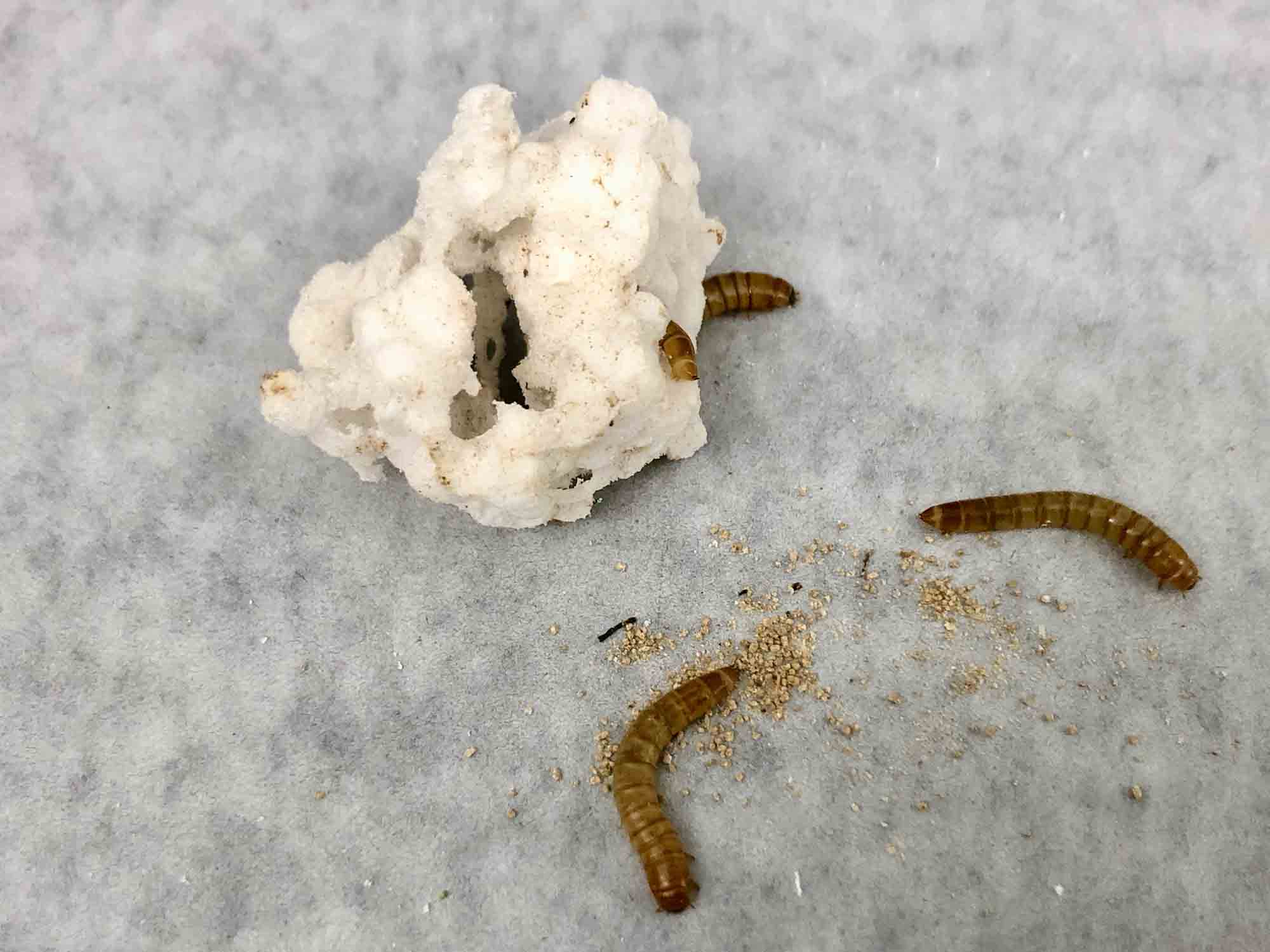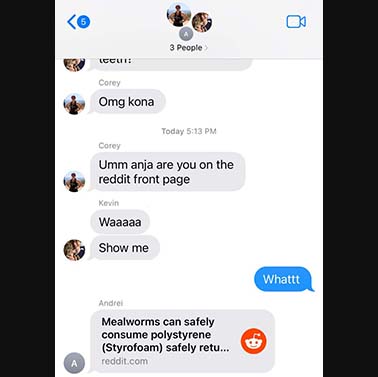How Much Plastic Do Mealworms Really Eat?
Find out what the research actually says about mealworms and what can really save us from the plastics crisis


A few weeks ago, I woke up to a series of text messages from friends and family. One read, “Umm, Anja are you on the reddit front page.”
I did a double take. Yes, I had spent years studying how mealworms can eat plastics while completing my graduate school thesis. But I had handed in my dissertation more than two years ago. What was it doing on Reddit now?
Turns out, like with all science, research builds on other research. This latest flurry of news—from NPR to The New York Times—resulted from the work another research team completed in Australia. This time, the team studied superworms (distinct from mealworms!) that exhibit similar abilities to consume plastics. The paper cited my original research, which is how I ended up getting a series of texts from friends from my grad school days.
It’s easy to see why this research continues to make headlines. Awareness of the plastic pollution crisis is growing, and people are looking for ways to deal with our plastic waste that are sustainable and circular.

My research focused on understanding how mealworms—the larval form of the darkling beetle—can eat and fully degrade plastics in a matter of hours. The key to this amazing ability of theirs are the microscopic bacteria in their gut that appear to secrete enzymes capable of chopping up these plastics. Unlike the “chemical recycling” or “advanced recycling” processes we hear about today, natural systems involving bacteria from the gut of insects would avoid plastic burning, greenhouse gas emissions and other environmental harms. These systems would more closely resemble composting, where naturally occurring bacteria break down waste into organic matter.
But how much plastic can a mealworm really eat? The short answer: not enough. According to my research, on average, 100 mealworms can consume 20 – 30mg of plastic per day. To put this in perspective, it would take 3,000 – 4,000 mealworms to process a single Styrofoam coffee cup. At this rate, it would take more than a quadrillion mealworms—one million billion mealworms—to eat ONE day’s worth of our global plastic production.
So, if mealworms can’t save us, what can?
Get Ocean Updates in Your Inbox
Sign up with your email and never miss an update.
Policy change. Put simply, we are producing too many plastics! To reduce the sheer volume of plastics produced and used, we must hold plastic producers responsible for the harmful waste they have generated and continue to pump into the environment. Luckily, these legislative tools are already available and gaining momentum. For example, over the past few months I worked with a coalition of environmental advocacy groups to shape SB 54, also known as the Plastic Pollution Producer Responsibility Act, in California. Governor Newsom signed the bill into law just last month. Among other measures, the bill requires a 25% reduction in the amount of single-use plastics in the state over the next 10 years. My colleagues and I crunched the numbers, and we estimate that that provision alone would eliminate 23 million tons of single-use plastics over the next ten years.
What this means is that we don’t need to count on mealworms or superworms or any other worms, for that matter, to solve this crisis. It’s in our hands.
